Abstract
The actions of purified tetra-, tri-, and di-ethyl lead on rats and rat brain slices and brain brei have been examined. A method based on a reaction with dithizone and capable of estimating tri- and di-ethyl tin in rat tissues has been developed.
After injection into rats tetraethyl lead is converted into triethyl lead and this is responsible for the toxic effects. Diethyl lead is much less toxic and the effects are different. The utilization of lactate and the oxidation of glucose by brain brei and slices respectively are inhibited by triethyl lead. A similar effect is seen in slices taken from rats poisoned with tetra- or tri-ethyl lead. Rat liver cell microsomes readily convert tetraethyl to triethyl lead and the latter is stable and remains in the animal tissues for several days. The concentration of triethyl lead in the brain is not high in comparison with other tissues but brain tissue appears to be unduly sensitive to its toxic action.
Neither tetra- nor tri-ethyl lead reacts with B.A.L. or ethylene-diamine-tetra-acetic acid (E.D.T.A.). Diethyl lead reacts with B.A.L. but not with E.D.T.A.
Full text
PDF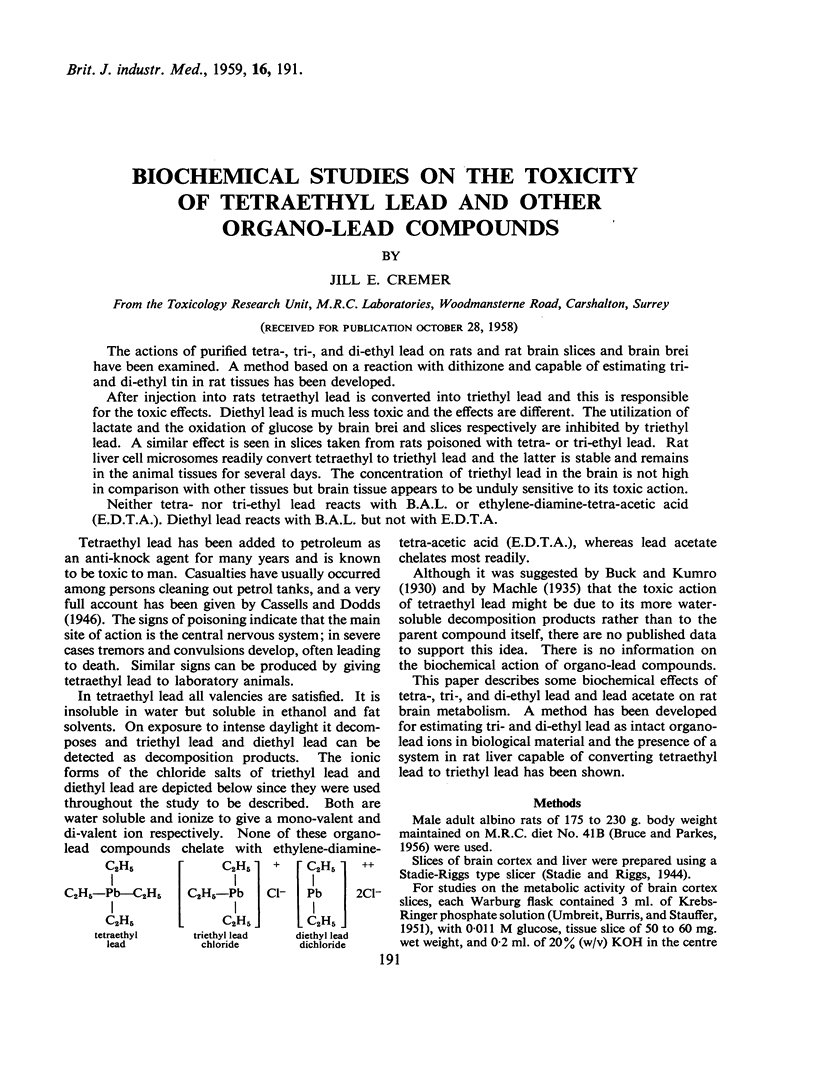
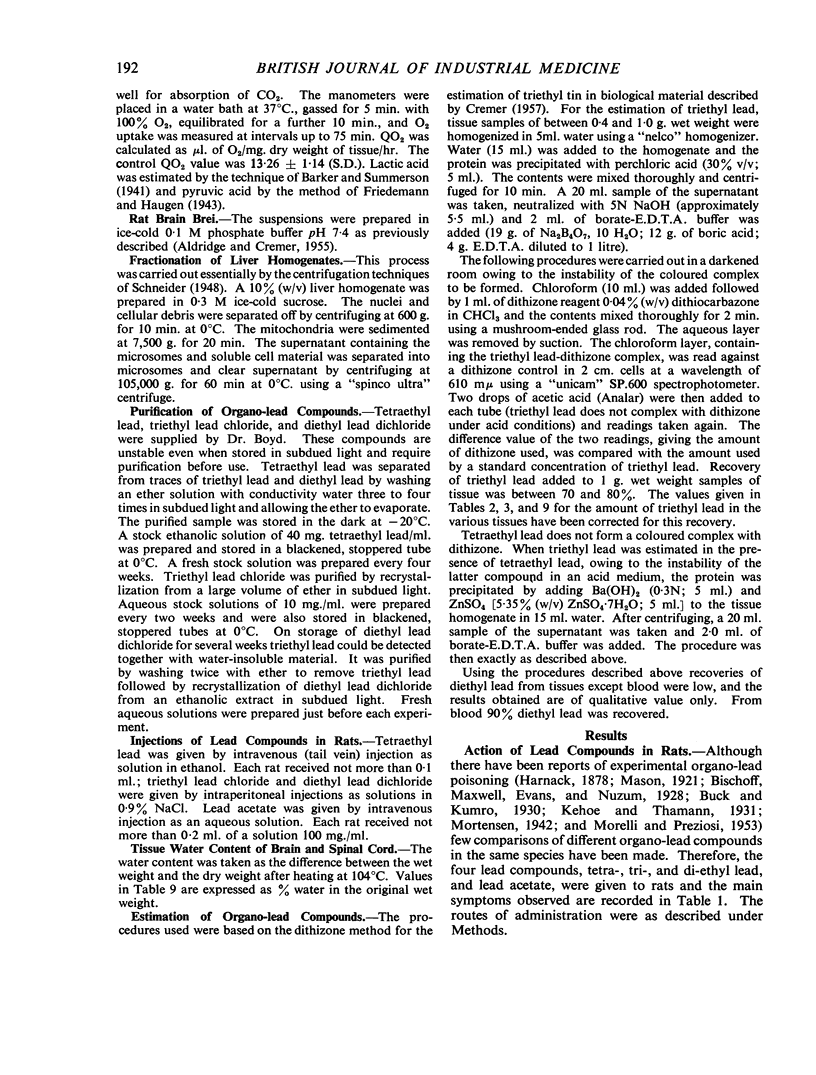
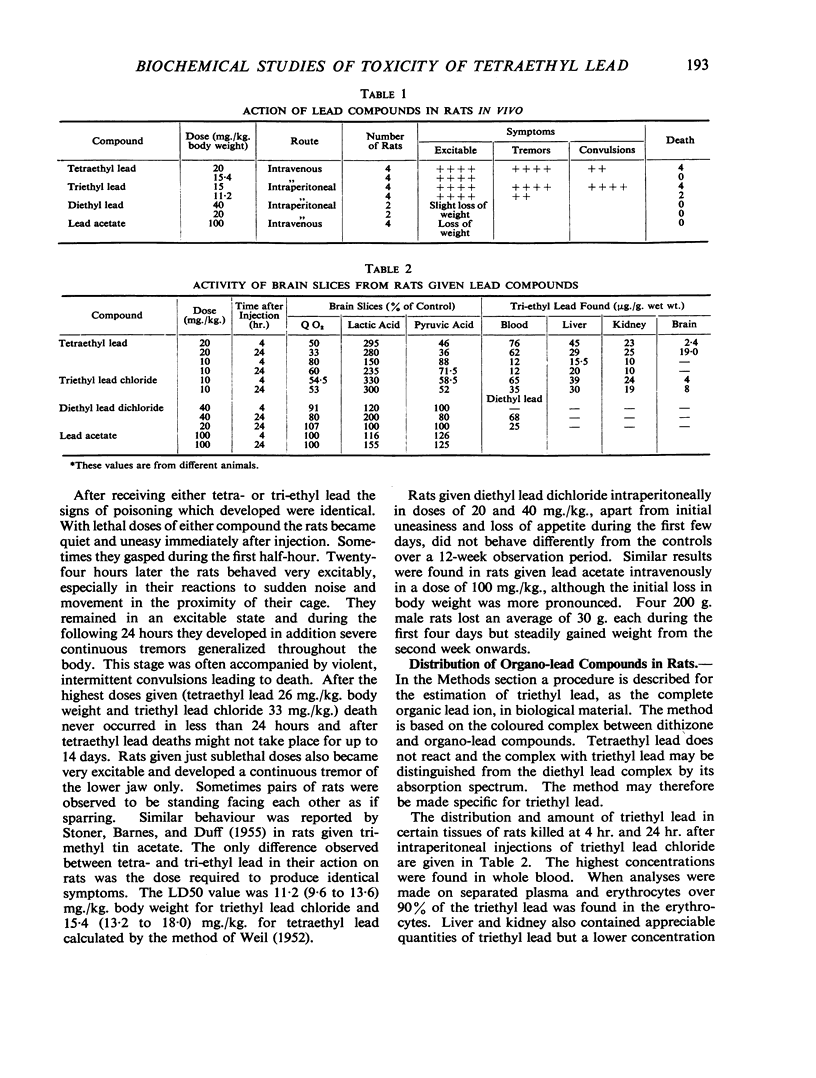
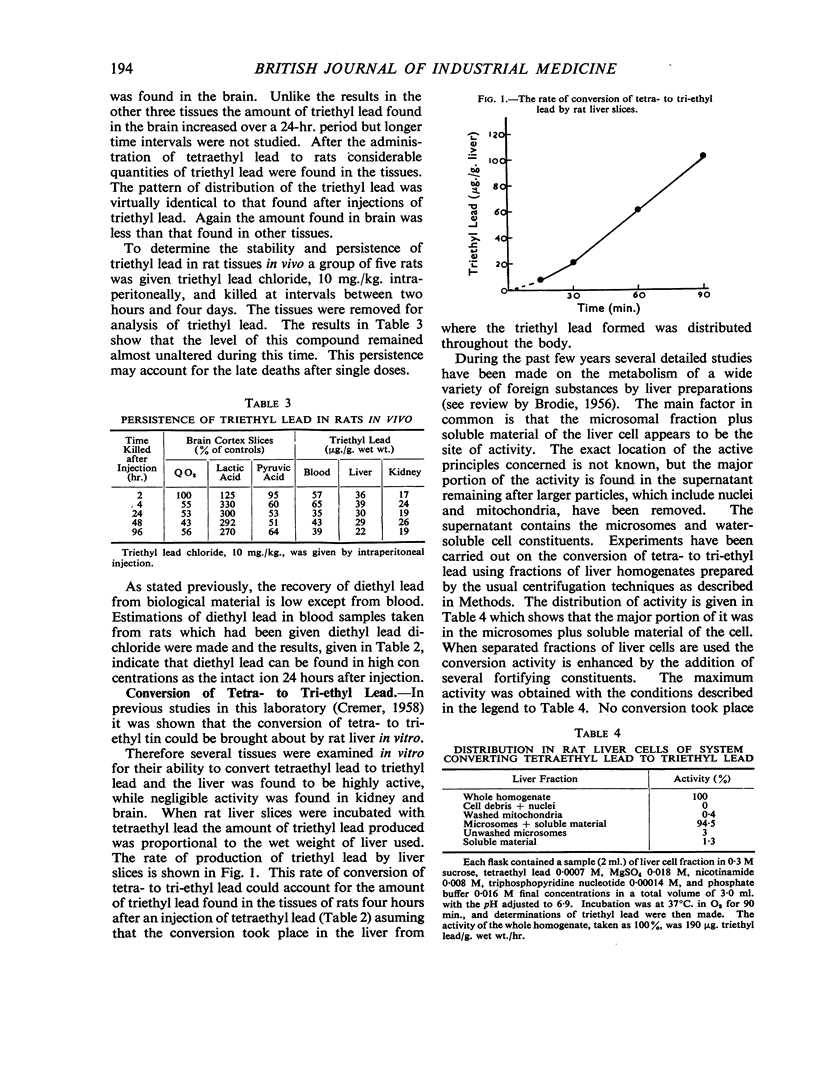
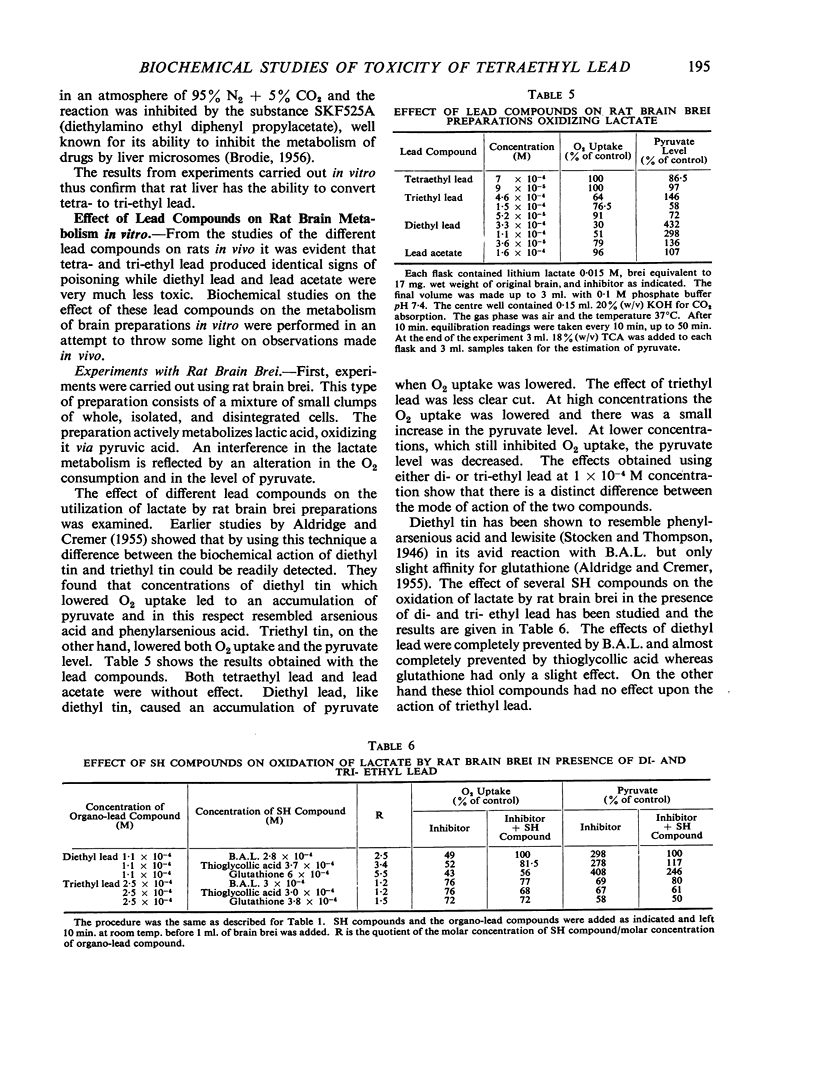
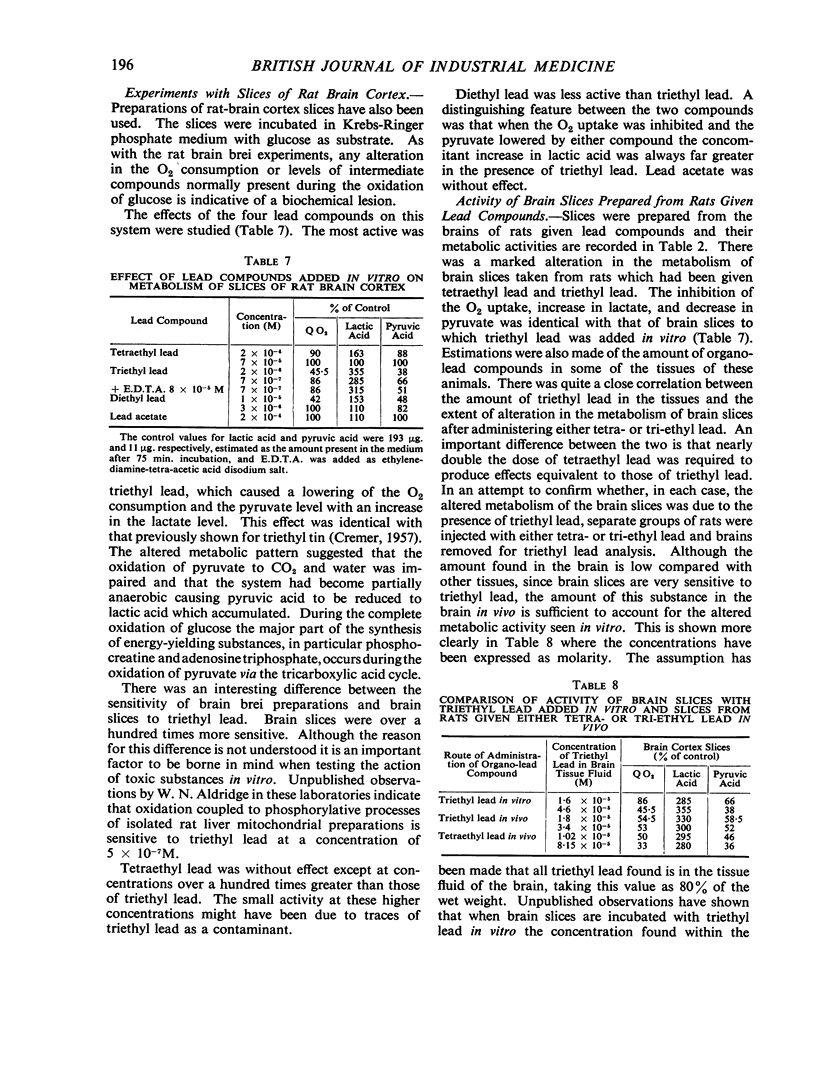
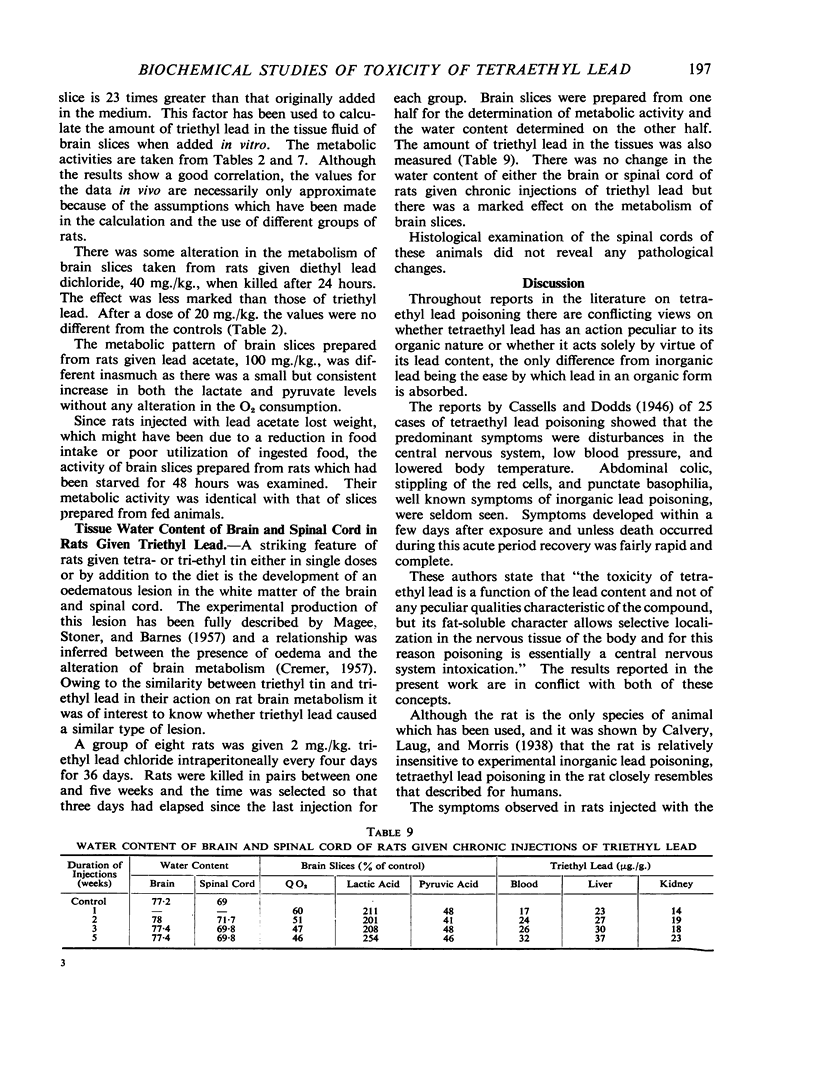
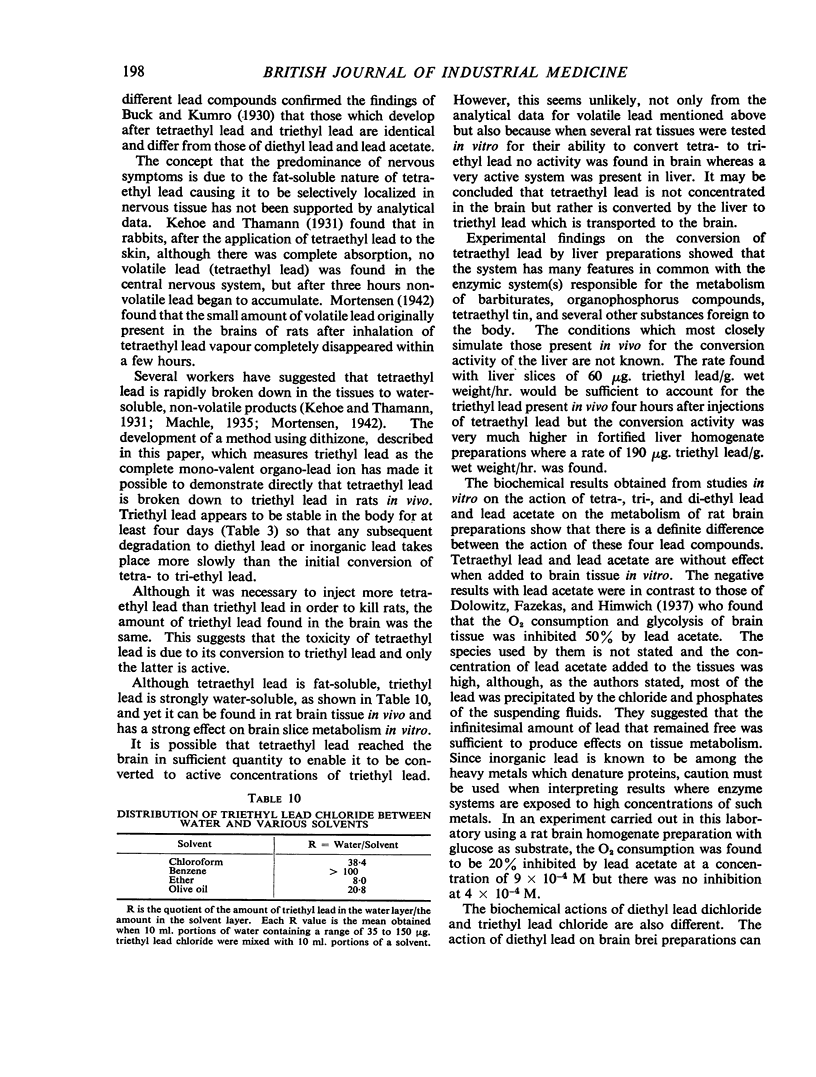
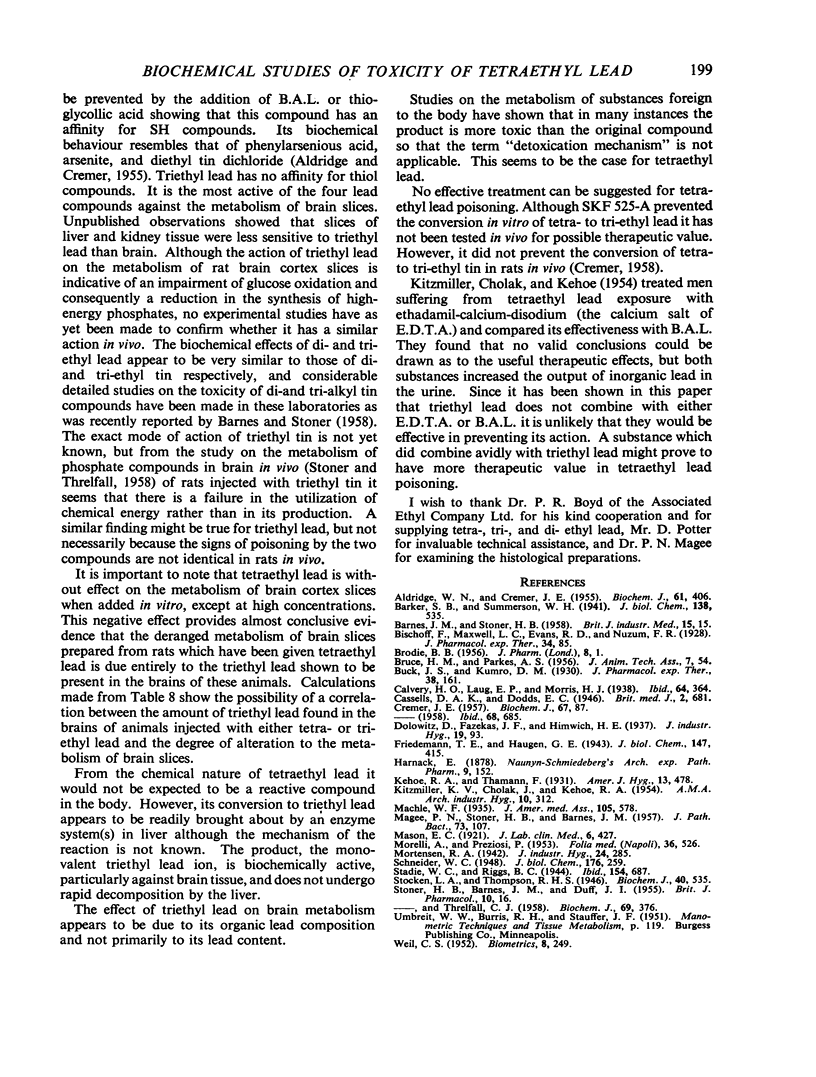
Selected References
These references are in PubMed. This may not be the complete list of references from this article.
- ALDRIDGE W. N., CREMER J. E. The biochemistry of organo-tin compounds; diethyltin dichloride and triethyltin sulphate. Biochem J. 1955 Nov;61(3):406–418. doi: 10.1042/bj0610406. [DOI] [PMC free article] [PubMed] [Google Scholar]
- CASSELLS D. A. K., DODDS E. C. Tetraethyl lead poisoning. Br Med J. 1946 Nov 9;2(4479):681–685. doi: 10.1136/bmj.2.4479.681. [DOI] [PMC free article] [PubMed] [Google Scholar]
- CREMER J. E. The metabolism in vitro of tissue slices from rats given triethyltin compounds. Biochem J. 1957 Sep;67(1):87–96. doi: 10.1042/bj0670087. [DOI] [PMC free article] [PubMed] [Google Scholar]
- KITZMILLER K. V., CHOLAK J., KEHOE R. A. Treatment of organic lead (tetraethyl) intoxication with edathamil calcium-disodium. AMA Arch Ind Health. 1954 Oct;10(4):312–318. [PubMed] [Google Scholar]
- MORELLI A., PREZIOSI P. L'azione del piombo tetraetile sulla pressione arteriosa e sul respiro. Folia Med (Napoli) 1953 Jul;36(7):526–537. [PubMed] [Google Scholar]
- STONER H. B., BARNES J. M., DUFF J. I. Studies on the toxicity of alkyl tin compounds. Br J Pharmacol Chemother. 1955 Mar;10(1):16–25. doi: 10.1111/j.1476-5381.1955.tb00053.x. [DOI] [PMC free article] [PubMed] [Google Scholar]
- STONER H. B., THRELFALL C. J. The biochemistry of organotin compounds: effect of triethyltin sulphate on tissue phosphates in the rat. Biochem J. 1958 Jul;69(3):376–385. doi: 10.1042/bj0690376. [DOI] [PMC free article] [PubMed] [Google Scholar]


